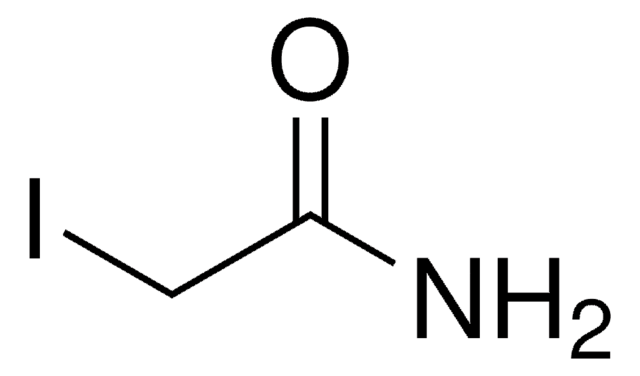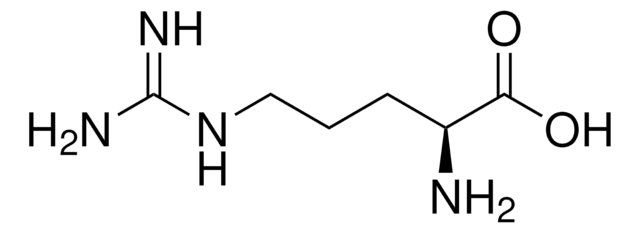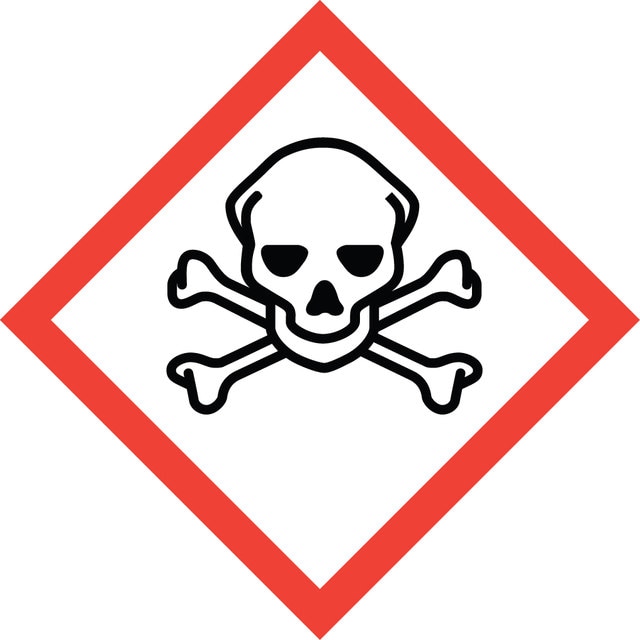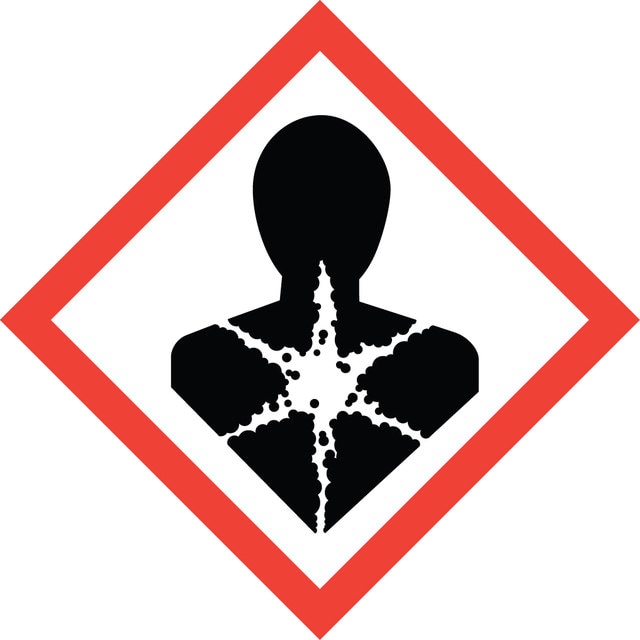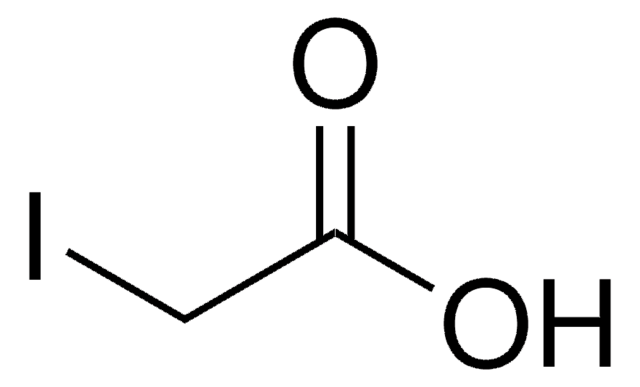I1149
Iodoacetamide
BioUltra
Synonym(s):
2-Iodoacetamide, Monoiodoacetamide, alpha-Iodoacetamide
About This Item
Recommended Products
biological source
synthetic (organic)
Quality Level
product line
BioUltra
assay
≥99% (NMR)
form
powder
impurities
≤0.0005% Phosphorus (P)
≤0.1% Insoluble matter
mp
92-95 °C (lit.)
solubility
H2O: 0.5 M, clear, colorless
anion traces
chloride (Cl-): ≤0.05%
sulfate (SO42-): ≤0.05%
cation traces
Al: ≤0.0005%
Ca: ≤0.0005%
Cu: ≤0.0005%
Fe: ≤0.0005%
K: ≤0.005%
Mg: ≤0.0005%
NH4+: ≤0.05%
Na: ≤0.05%
Pb: ≤0.001%
Zn: ≤0.0005%
storage temp.
2-8°C
SMILES string
NC(=O)CI
InChI
1S/C2H4INO/c3-1-2(4)5/h1H2,(H2,4,5)
InChI key
PGLTVOMIXTUURA-UHFFFAOYSA-N
Looking for similar products? Visit Product Comparison Guide
Related Categories
Application
- in protein digestion for proteomic analysis
- to alkylate protein samples
- in the denaturation of cow′s milk allergens, β-lactoglobulin (BLG) and α-lactalbumin (ALA)
Biochem/physiol Actions
signalword
Danger
Hazard Classifications
Acute Tox. 3 Oral - Aquatic Chronic 4 - Resp. Sens. 1 - Skin Sens. 1
Storage Class
6.1C - Combustible, acute toxic Cat.3 / toxic compounds or compounds which causing chronic effects
wgk_germany
WGK 3
flash_point_f
Not applicable
flash_point_c
Not applicable
ppe
Eyeshields, Faceshields, Gloves, type P2 (EN 143) respirator cartridges
Certificates of Analysis (COA)
Search for Certificates of Analysis (COA) by entering the products Lot/Batch Number. Lot and Batch Numbers can be found on a product’s label following the words ‘Lot’ or ‘Batch’.
Already Own This Product?
Find documentation for the products that you have recently purchased in the Document Library.
Customers Also Viewed
Our team of scientists has experience in all areas of research including Life Science, Material Science, Chemical Synthesis, Chromatography, Analytical and many others.
Contact Technical Service